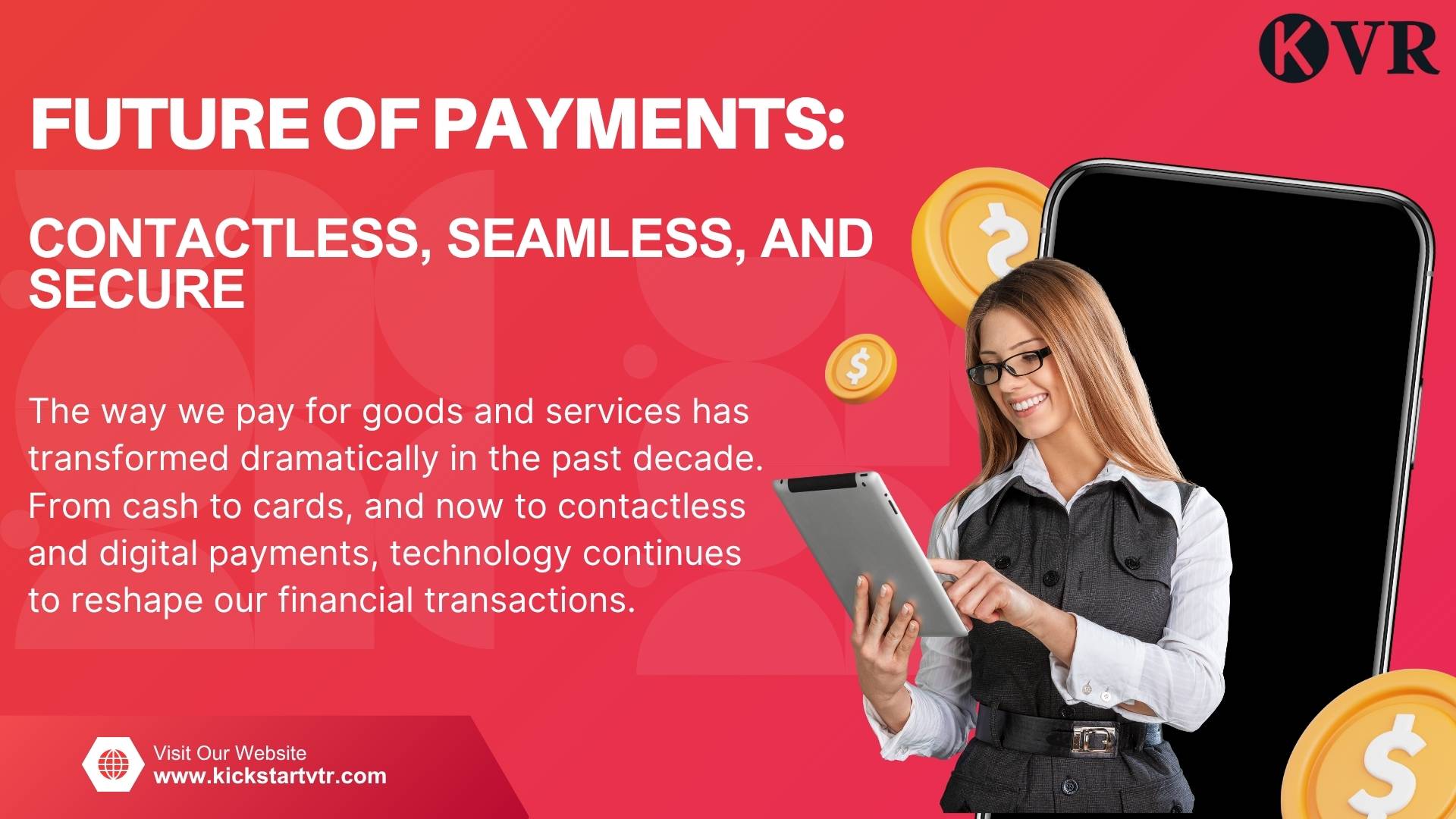Future of Payments: Contactless, Seamless, and Secure
The manner in which we pay for products and services has undergone a significant transformation over the past decade. Technology has continued to transform our financial transactions transitioning from currency to cards and now to contactless and digital payments. The future of payments is becoming more contactless, seamless, and secure as we continue to progress in the digital age let us investigate the impact of these three trends on the future of payments and the implications for both businesses and consumers.
The Rise of Contactless Payments
Contactless payments have grown in favor worldwide, notably since the COVID-19 outbreak which emphasized the necessity for sanitary touch-free payment systems. According to recent surveys contactless payments are predicted to account for more than half of all global transactions by 2030.
How Contactless Payments Work
Contactless payments are made possible by technologies like NFC (Near Field Communication) and RFID (Radio Frequency Identification). People who want to buy something just wave their contactless cards, smartwatches, or cellphones near a payment terminal.
Benefits of Contactless Payments
- Speed: Transactions are completed in seconds, reducing queues and wait times.
- Convenience: Users no longer need to carry cash or even their wallets—just their smartphones or wearables.
- Hygiene: A no-touch payment process limits the spread of germs, making it safer for health-conscious individuals.
The Seamless Payment Experience
When payment systems are built into everyday life in a way that makes the payment process feel natural, this is called seamless payments. Making payments invisible is intended to improve customer satisfaction and streamline transactions.
Examples of Seamless Payment Innovations
1. Biometric Payments: Fingerprints, facial recognition, and voice authentication are being used for secure and easy payment authorizations.
2. Voice-Activated Payments: Smart assistants like Alexa and Google Assistant are enabling payments through voice commands.
3. IoT-Enabled Payments: Smart refrigerators and other Internet of Things (IoT) gadgets can automatically place new grocery orders and make payments.
4. Embedded Payments: Applications such as Uber provide automated payments eliminating the necessity to present a card or cash.
Why Seamless Payments Matter
- Enhanced User Experience: No interruptions mean happier customers.
- Increased Loyalty: A smooth payment experience can lead to higher customer retention.
- Business Efficiency: Faster transactions reduce operational delays and boost revenue.
Security: A Non-Negotiable Factor
As payment methods change, so do the hazards involved the payments sector continues to place a high premium on cybersecurity to shield customers and companies from fraud and data breaches.
Technologies that Guarantee Payment Security
1. Tokenization: Replace sensitive card data with a unique token or identity to complicate hackers' access attempts.
2. Encryption: Ensures that the data transferred during a transaction is not accessed by unauthorized organizations.
3. Multi-Factor Authentication (MFA): Requires users to submit multiple forms of verification including a biometric scan and a password.
4. Artificial Intelligence (AI): Fraud monitoring systems that use AI can spot and stop questionable actions in real time.
Future Security Trends
- Quantum cryptography: using quantum computers to make encryption almost impossible to break.
- Behavioral Biometrics: Identifying users based on patterns like typing speed or swipe gestures.
Zero-Trust Architecture is a way of doing things that says no person or object is reliable until they are proven to be so.
Challenges and Opportunities
While the future of payments looks promising, there are challenges to address:
- The digital divide: Some people don't have access to the tools they need to make cashless or smooth payments.
- Interoperability: ensuring that payment methods are compatible with various platforms and geographical areas.
- Regulation: Governments need to update laws to keep pace with payment innovations.
On the flip side the opportunities are vast:
- Financial Inclusion: People can purchase items without the need for a bank account or a sufficient amount of funds in their account through digital payments.
- Global Expansion: Businesses can easily cater to international customers through digital payment systems.
- Personalization: Based on customer behavior AI and data analytics may offer tailored payment experiences.
The Role of Businesses in Shaping the Future
Companies cannot dodge the future of payments; they must adapt to it. Here are some ways for companies to stay ahead:
- Invest in Payment Technology: Adopt systems that support contactless and seamless payments.
- Educate Consumers: Help customers understand and trust new payment methods.
- Collaborate with Fintech: To gain access to innovative solutions, collaborate with financial technology firms.
Conclusion
Technological progress and shifting customer expectations are paving the way for contactless, seamless, and secure payment systems in the future not only will these trends boost customer happiness, but they will also give businesses a competitive edge. This change will provide customers more ease and convenience than ever before.
Governments, financial institutions, and technology companies working together will be essential as we develop a payment environment that is secure effective, and inclusive for all. The future has here and is changing the way we trade value in a society that is dominated by digital technology and moves quickly.

